















|
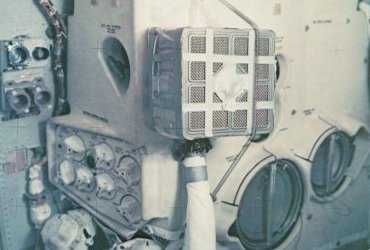
|
| "Backroom" experts at Mission Control worked many hours to devise the fix that possibly kept the astronauts from dying of carbon dioxide. CapCom Joe Kerwin led Astronaut Swigert, step by step, for an hour to build a contraption like the one the experts had constructed on Earth. It involved stripping the hose from a lunar suit and rigging the hose to the taped-over CM double canister, using the suit's fan to draw carbon dioxide from the cabin through the canister and expel it back into the LM as pure oxygen. |
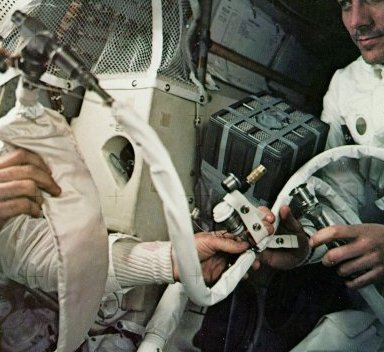
|
| Emergency scrubbers were built by Swigert and Haise. Photo above shows Swigert sitting next to a tapedover double canister and holding one end of a suit nozzle while Fred Haise used both his hands to manipulate the long hose. Underneath the canister is a "mailbox" built of arched cardboard, which was covered by a plastic bag. When Lovell later saw the rig put together on Earth, he said, "It looks just like the one we mode." It saved the astronauts from possible death from carbon dioxide. |
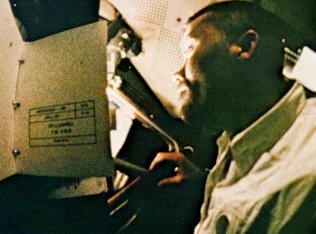
| Without a course correction, the returning spacecraft would have missed the Earth completely. Inertial references were stored in the guidance platform, but sightings an the Sun gave the astronauts confidence that the crucial burn would be properly oriented. |
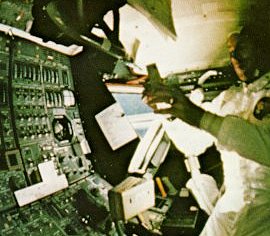
| In the darkened, power-short spacecraft, temperature dropped to 38° F. Lovell and Haise donned their lunar boots, Swigert an extra suit of underwear. Water condensed on the cabin walls and windows frosted. Food was refrigerator-cold. |
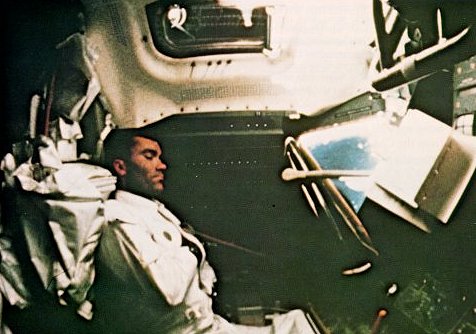
|
| Haise dozes with his hands restrained to keep his weightless arms from flopping about. In the cold gloom, one crew member stayed on watch at all times. Stay-awake pills helped during the final hours as the Earth came whistling at them like a freight train. |


